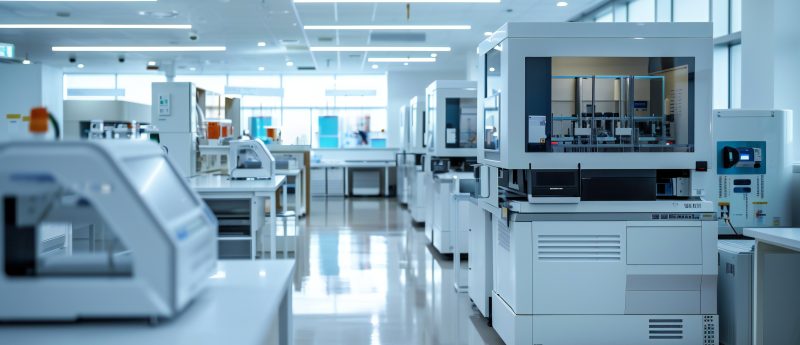How do you decide whether to use LBA or hybrid LBA/LC–MS assays in discovery and development?

Fabrizia Fusetti (QPS)
“Selecting the appropriate platform depends on the stage of drug development (exploratory, pre-clinical, clinical), the selectivity and sensitivity requirements, the expected concentration range, the availability of well-defined reagents (specific antibodies for LBAs) and of a representative internal standard (for LC–MS assays). The extent of expected cross reactivity, the required dynamic range, robustness and throughput will define the need to adapt the analytical platform during drug development. In addition, timelines and regulatory aspects involved might influence the final decision for bringing forward one or the other analytical platform.
Hybrid LBA/LC–MS approaches offer sufficient sensitivity and higher flexibility of assay development during early pre-clinical stage, bypassing the need for high-quality custom reagents. If accurately designed, a single assay will have the potential to accompany the full drug development trajectory from nonclinical studies to clinical trials, across matrices and species.”
Omnia Ismaiel (PPD)
“The selection of bioanalytical method (i.e., LBA or hybrid LBA/LC–MS) depends on the intended objectives of the study, the question(s) to be answered and the required PK/PD information at the specific phase of drug development.
LBAs are well-established and characterized techniques. Due to the widespread acceptance of LBAs for biotherapeutics bioanalysis, it has been challenging for hybrid LBA/LC–MS techniques to be adopted and accepted by the pharmaceutical and regulatory communities.
Deciding whether to use LBA or hybrid LBA/LC–MS assays in the different phases of drug development requires careful consideration about the analytes to be measured and the resources available. When changing the assay format from discovery to development, scientists should be aware of the assay specifics in terms of what they measure and the impact on data interpretation. Proper justification is required to explain the implications of the assay format change on data interpretation in regulatory submissions.
The main advantages of LBAs over hybrid LBA/LC–MS are higher sensitivity and higher throughput capacity. However, microflow LC offers an additional means of improving sensitivity in hybrid LBA/LC–MS assays. Additionally, hybrid LBA/LC–MS assay approaches offer higher accuracy and precision due to the use of internal standards and can be used as an alternative in case of difficulty with LBA reproducibility.
Hybrid LBA/LC–MS approaches can also be used in case of difficulties with LBA selectivity, if multiplexing is mandatory to ensure structure integrity (e.g., proteins with multi-functional domains, Probody® and/or fusion proteins) or for quantifying the target analyte in the presence of other analytes and/or endogenous interfering components (i.e., using a unique signature peptide) [1, 2].
The availability of critical reagents (capture and detection) for LBAs may be a challenge in some cases because hybrid LBA/LC–MS/MS is less dependent on critical reagent availability. Generic reagents such as protein A and G magnetic beads, anti-human Fc and anti-human IgG biotinylated antibodies are readily available and can be easily used with hybrid LBA/LC–MS/MS [3]. MS allows tracking of specific structural modifications and post-translational modifications, such as oxidation and deamidation. Hybrid LBA/LC–MS/MS is usually used for tracking of PTMs that may affect drug efficacy.”
Olivier Heudi (Novartis)
“The decision is based on molecule type and the project stage. With traditional antibody projects, at the early stage, LC–MS/MS is preferred as the type of information obtained (PK, binding site, structural elucidation) is useful for the compound optimization. During the course of the development, for example, the pharmacokinetic support of dose ranging studies, LC–MS/MS is also favored. LC–MS/MS can also be used for the clinical studies providing the assay is sensitive enough – otherwise ELISA is used. Overall, the phase of the project, the type of the compounds (antibodies or modified antibody) and the time needed to develop the method will drive the selection of the assay.”
Steven Piccoli (GSK)
“Whenever it seems as if there is not a clear answer as to which technology is the appropriate one for the question at hand, frequently the answer is ‘both’, i.e., the hybrid. The combination of a well-designed and screened antibody reagent in conjunction with LC–MS enables answering questions beyond the reach of either technology alone.”
References
[1] Jiang H, Zeng J, Titsch C et al. Fully validated LC–MS/MS assay for the simultaneous quantitation of co-administered therapeutic antibodies in cynomolgus monkey serum. Anal. Chem. 85(20): 9859–9867 (2013).
[2] Ma E et al. Multiplexed Quantitation of Highly Homologous mAbs in Human Serum. Programme and Abstracts of the 11th Workshop on Recent Issues in Bioanalysis. Los Angeles, CA, USA, 3–7 April 2017 (Poster presentation).
[3] Kumar S, King LE et al. Antibody–drug conjugates nonclinical support: from early to late nonclinical bioanalysis using ligand-binding assays. Bioanalysis, 7(13), 1605–1617 (2015).

![Omnia_Ismaiel[1]](https://www.bioanalysis-zone.com/wp-content/uploads/2019/09/Omnia_Ismaiel1-225x300.jpg)





